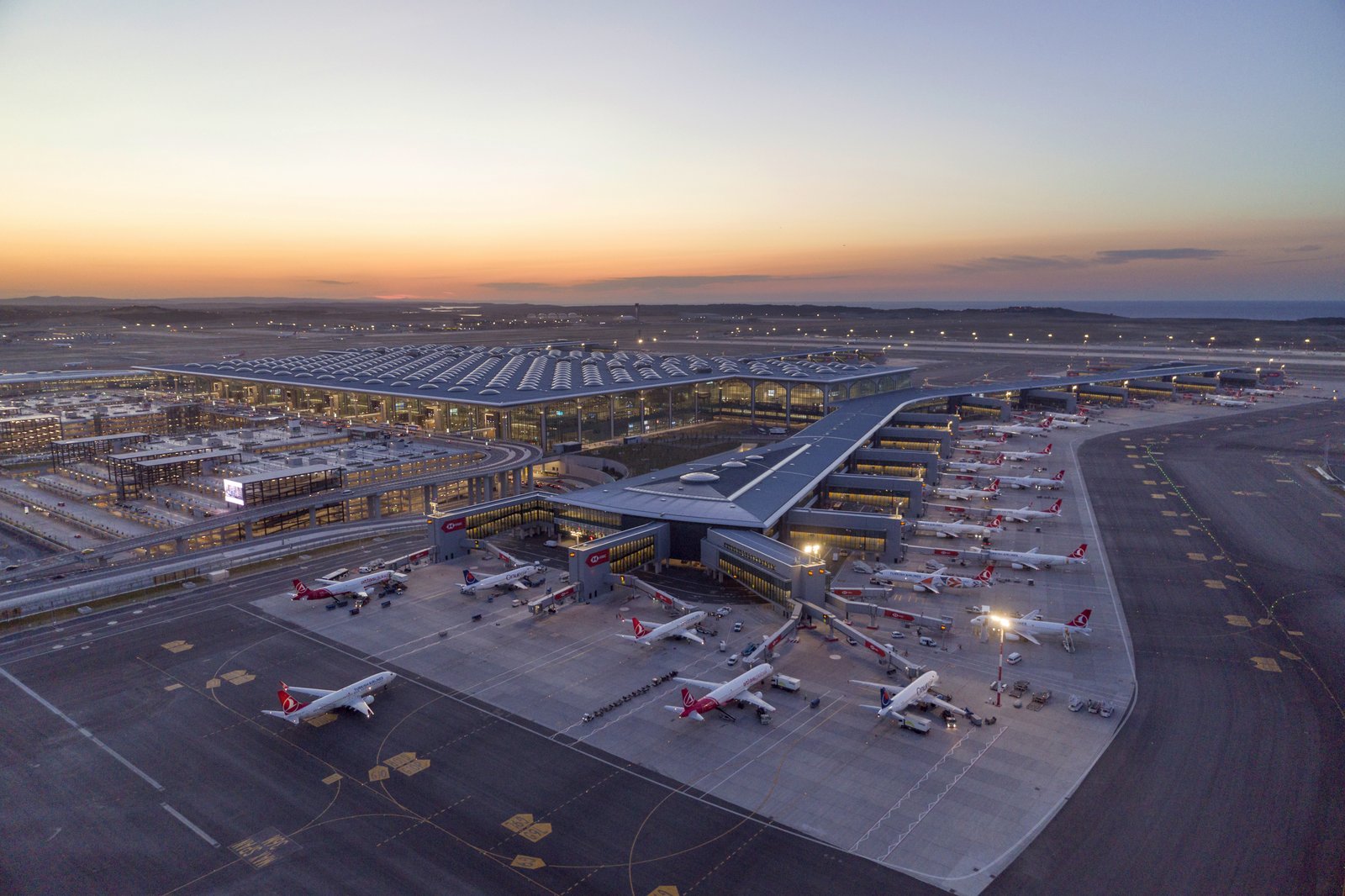Source: IGA Istanbul Airport
- The world’s most important global hub, iGA Istanbul Airport, activated a pioneering application developed in line with its digitalization strategy; at this level (Level 3), the “Routing Service” of the Advanced Surface Movement Guidance and Control System(A-SMGCS) technology. The system delivers the best integration for advanced situation awareness and operational control.
Integrating the newest technologies in the aviation industry into the current applications and procedures is becoming increasingly crucial for a more sustainable airport. iGA Istanbul Airport carries out the required planning by optimizing the needs of all stakeholders, as joint projects with airline companies, other airports, aircraft manufacturers and the sub-groups suitable for the sector’s dynamic structure, as per the Eurocontrol specifications, accurately meeting the Eurocae performance criteria, and following the rules of national and international organizations.
Aiming to maximize the current runway and taxiway capacity while maintaining maximum safety with its increasing air traffic, iGA Istanbul Airport announced the activation of the first application in the world at this level (Level 3), the “Routing Service” of the Advanced Surface Movement Guidance and Control System (A-SMGCS) technology.
Deputy General Manager of the State Airports Administration (DHMI) Dr. Cengiz Paşaoğlu, EC-DG MOVE General Manager Henrik Hololei, SESAR JU Executive Director Andreas Boschen, Eurocontrol DG Advisor Haydar Yalçın, AHEN and SAAB officials were among the guests who attended the launch, presented by iGA Istanbul Airport Deputy General Manager Chief Planning Officer and Eurocontrol PRC Member İsmail Hakkı Polat.
This is a win-win situation for all the stakeholders.
İsmail Hakkı Polat stated that the A-SMGCS system, covering the entire airside operation area, the PAT field of 14 million square metres, including three main runways, two secondary runways, 178 taxiways, and 367 stands, has been in use since 2018 at Istanbul Airport. He added that all of the system’s functions, operational 24/7 at iGA Istanbul Airport, were developed by the State Airports Administration (DHMI) Air Traffic Tower teams as joint work. Polat said: “Supporting the movement of aircraft and vehicles under all weather conditions and traffic density ‘Advanced Surface Movement Guidance and Control System’ (A-SMGCS) provides the best integration for advanced situational awareness and operational control at iGA Istanbul Airport. We are excited to have activated the first application at this level (Level 3) of the ‘Advanced Surface Movement Guidance and Control System’ (A-SMGCS) technology in line with our digitalization strategy,” and highlighted that the system provides safer operations for airports, efficiency for airline companies, and faster transportation opportunities by reducing taxi durations.
The A-SMGCS concept comprises four stages.
A-SMGCS delivers Monitoring (Level 1), Safety Support (Level 2), Direction (Level 3), and Guidance (Level 4), maintaining situational awareness regardless of the weather conditions and allowing performance assessment of all stakeholders involved in the airside operations. Increasing the safety and efficiency of the surface movement operations is aimed by identifying and tracking aircraft and vehicle positions, especially in low visibility conditions, through A-SMGCS System. The A-SMGCS system helps with the effective management of all functions, such as airport capacity, the reduction of emission and noise impact, and in particular operational productivity.
A-SMGCS systems around the world are generally in limited use at Level 2 due to inadequate infrastructure and high infrastructure improvement investments. The implementation of Level 3 (Direction – Determining the most efficient route for every aircraft/vehicle) and Level 4 (Guidance – ensuring that pilots and ground vehicle drivers follow the assigned paths), which is in the preparation process, to facilitate the aircraft to use the optimum taxiways for safer and more efficient ground movements at Istanbul Airport will inevitably lead to carbon emission reduction.

